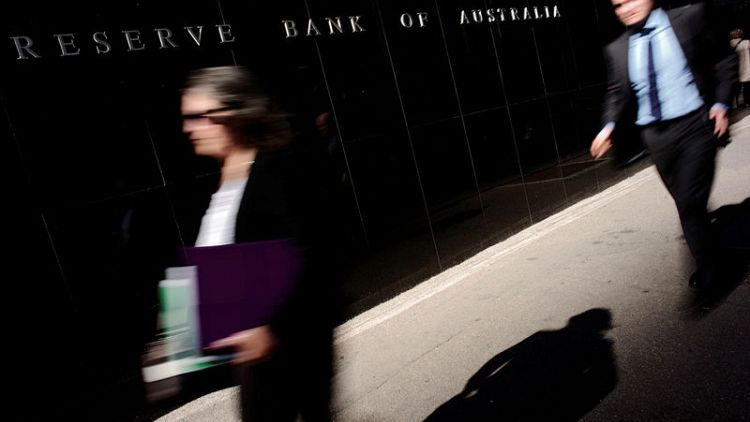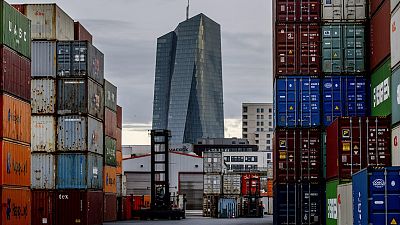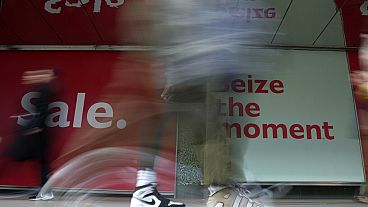SYDNEY (Reuters) - Australia's central bank signalled on Friday it will consider lowering interest rates if unemployment does not fall further, a major step towards the first policy easing since 2016.
The shift is largely led by a sharp downturn in the country's once-booming property market which is hurting household consumption and income, the Reserve Bank of Australia (RBA) said as it downgraded forecasts for growth and inflation.
The RBA board focussed on the implications for low inflation outcomes for the economy at its meeting on Tuesday, Governor Philip Lowe said in the RBA's 78-page quarterly statement on monetary policy.
"It concluded that the ongoing subdued rate of inflation suggests that a lower rate of unemployment is achievable while also having inflation consistent with the target," he added.
"Given this assessment, the Board will be paying close attention to the developments in the labour market at its upcoming meetings."
On Friday, the RBA predicted underlying inflation will remain below the mid-point of its 2-3 percent target band through mid-2021 with wages growth seen inching up at a snail's pace. Inflation is not seen reaching the bottom-end of the band until June 2020.
The RBa noted that government efforts to rein in cost of living increases, from child care to electricity, were also acting to restrain inflation.
The outlook for consumption was a "key source of uncertainty", leading the bank to yet again cut forecasts for domestic growth to 2.75 percent this year, from previous expectations of 3.0 percent. It now expects growth to hover around 2.75 percent through to mid-2021.
That is a remarkable downgrade from November when the RBA was optimistic Australia's A$1.9 trillion economy would expand at 3.3 percent this year and 3.0 percent next.
The change in outlook comes as weak private consumption and sharp falls in dwelling investment slowed overall economic growth to a below-par 2.3 percent over 2018.
The revisions to growth and inflation forecasts are based on a "technical assumption" that the cash rate would follow the market pricing of two cuts to 1.00 percent, suggesting the outlook would be worse if the RBA stood pat at 1.50 percent.
The RBA took heart from strong exports and private investment for new mining projects which along with public spending are likely to support the economy going forward.
Also helping is a strong employment sector with the jobless rate at its lowest since mid-2011.
The RBA noted that leading indicators of labour demand point to a moderation in the near-term. Its own forecast is for the jobless rate to stay at 5.0 percent through June 2020 before easing to 4.75 percent the following year.
A KEY RISK
The RBA, in February, walked away from its long-held tightening bias to a neutral stance as a sharp-than-expected correction in the housing market amid record high household debt added to uncertainties about the outlook for consumption.
Economic data since has continued to disappoint, leading investors to price in a real chance of two rate cuts this year.
Data out earlier this week showed first-quarter retail sales fell 0.1 percent for its first negative reading in seven years, while building approvals are showing steep falls.
Home prices across the country are now down about 10 percent for their worst performance in a generation.
Wage growth was unlikely to pick up by a lot, according to the RBA, keeping a lid on household income and spending.
Lowe did hold out the hope of a small revival in consumption given strong jobs growth recently, but his own forecasts pointed to subdued spending growth of 2.0 percent this year and 2.6 percent next year. That compares with 4-6 percent before the global financial crisis.
"Weak growth in household income poses a key risk to the outlook for household consumption especially in the context of falling housing prices and the need for many households to service high levels of debt," Lowe said.
(Reporting by Swati Pandey; Editing by Wayne Cole)



